Excerpts from Jim Conrad's
Naturalist Newsletter
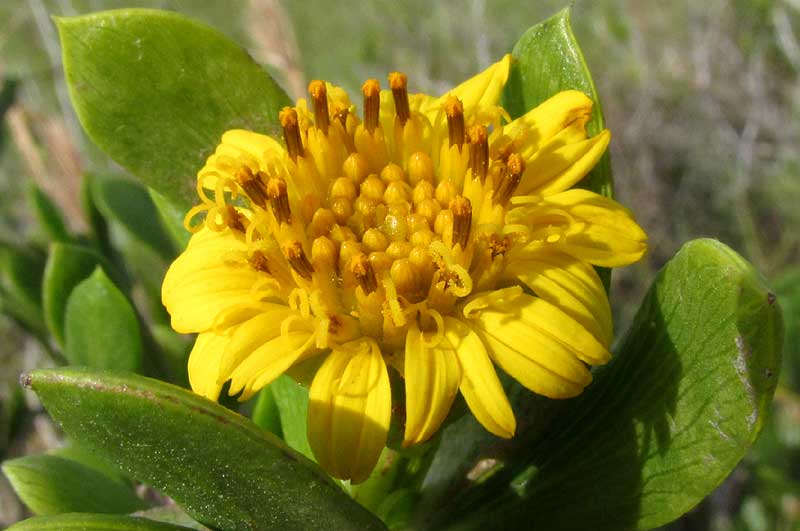
from the January 18, 2015 Newsletter issued from Río Lagartos, on the Yucatan Peninsula's northern coast (~N21.60°, ~W88.16°), Yucatán state, MÉXICO
SEASIDE OXEYE
A roadside through the salt flats was prettily fringed with yellow flowered, knee high, goldenrod-like Yellowtop, Flaveria linearis. Here and there a little farther off the road, at the edge of ground too wet and salty for regular plants to grow on, stood a much-branched, belly-high, halfway scraggly looking shrub with thick, semi-succulent, whitish stems and small, succulent leaves arranged two per stem node (opposite), as shown below:
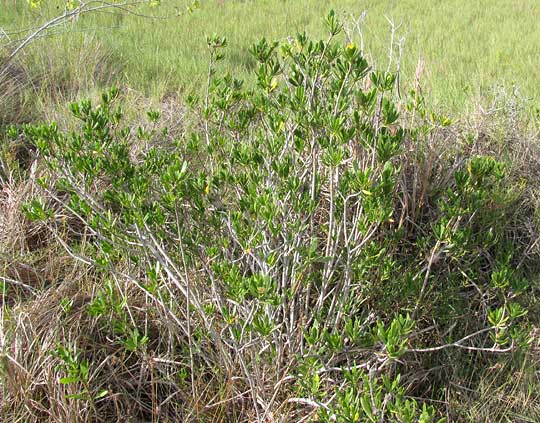
With such succulent leaves and rubbery stems the bush was obviously a halophyte adapted for salty soil, which was interesting, but even more interesting was that it was a member of the big Composite or Daisy Family, the Asteraceae, which contains only a few halophytic species. At the top of this page you can see one of the shrub's typical daisy-type flowering heads framed by sharp-tipped, succulent leaves.
When identifying members of the Composite Family it's always worth paying attention to the scale-like bracts forming the bowl-shaped " involucre" below the flowering head, for bracts come in endless shapes, colors, textures and configurations. This succulent bush's round-tipped bracts were appropriately and strangely succulent, absolutely bloated with juicy, salty tissue, as shown below:
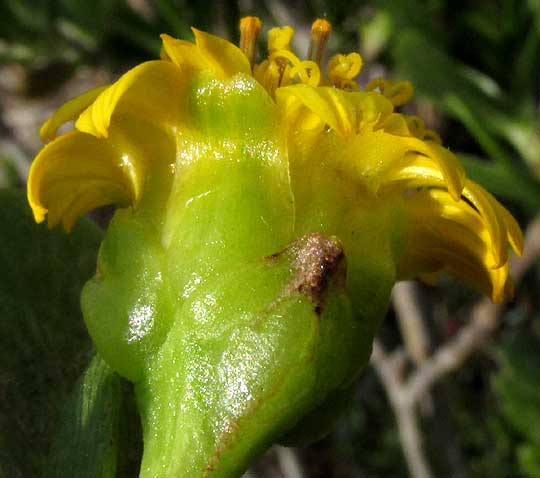
Breaking open a flowering head to see what kind of "pappus" arose atop the future fruits, if any, I found that instead of the usual hairs or scales the pappus was a kind of irregular cup or crown surrounding the base of the corolla tube, as shown below:
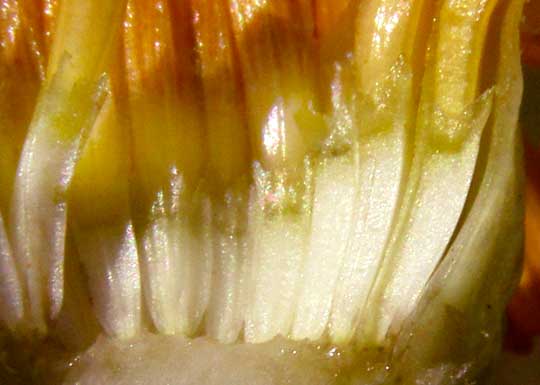
Some of the bush's flowering heads already had matured and were producing fruits. Below, you can see some mature, cypsela-type fruits with their pappi dried up but persisting atop them:
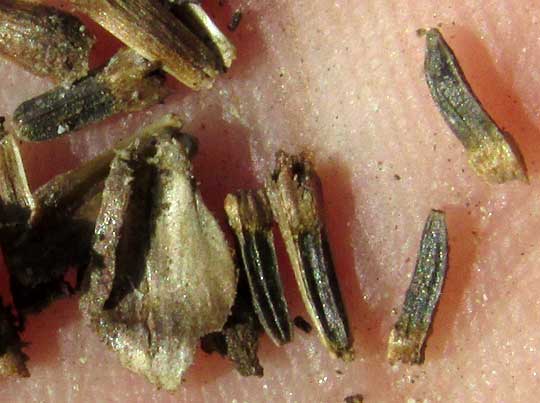
With so many unusual features, this shrub was easy to identify to genus level. It was a Borrichia, a small genus of only three species, with all species limited to only the US, Mexico and the Caribbean area. The three species are similar looking, but the involucres of only one have round-tipped bracts like those in our photo, as opposed to sharp or spine tipped one, and that's BORRICHIA ARBORESCENS.
Borrichia arborescens occurs in the Florida Keys, Bermuda and the Caribbean area, and here and there on shores of the Gulf of Mexico. With such pretty flowers it enjoys many names, a real mishmash of them, including Silver Sea Oxeye, Tall Sea Oxeye, Tree Seaside Tansy, Tree Seaside Oxeye, Seaside Tansy and Seaside Oxeye. In the Yucatan it's called Margarita de Mar, or Ocean Marigold.
The shrub is pretty enough to be planted occasionally in tropical gardens, where it often serves as a hedge or ground cover. Its succulent leaves are salty tasting but a little bitter with too much of a resiny taste to want to eat many. A few dropped into a salad might be nice, though.